Becoming the youngest player in Premier League history is some sign of the talent of Harvey Elliott, after he made his league debut for Fulham at the age of 16 years and 30 days.
Having since joined European champions Liverpool, it’s clear that much is expected of the teenager in 2020 under Jurgen Klopp.
The German has already put his faith in the youngster, giving him a first-team debut in the Carabao Cup against MK Dons and then calling him up for FIFA’s Club World Cup.
Few players have been thrown into the first-team context on Merseyside at quite such a young age, particularly having only joined the club this summer.
2020 will be a year which could determine just how quickly that progress will continue.
The expected arrival of Takumi Minamino in January could seem to place another obstacle in his development, given that he is already competing with Xherdan Shaqiri for a first-team role.
However, Elliott is making rapid progress and continuing his development.
He can expect to take some substantial steps to continue this progress into 2020.
This tactical analysis and scout report will analyse how Elliott fits into Jurgen Klopp’s tactics in the Liverpool system and what role he could play in 2020 through analysis as he continues to make his impression on the first team.
Harvey Elliott position At Liverpool
Elliott predominantly plays on the right-hand side of a front three, a role that he has stuck with throughout his progression from Fulham’s youth system to the first team and since joining Liverpool at both under 23 and first-team levels.
As can be seen from his heat map, he likes to hug the line and will rarely drift around into central roles or swap flanks perhaps as regularly as the likes of team-mates Sadio Mané and Mohamed Salah.
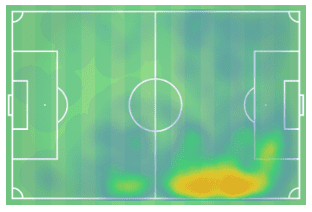
Often, he is the kind of player who will stick to the flank and look to stretch play.
As this example from his first-team debut against MK Dons shows, he will remain in a wide position even as the ball is on the other flank so that when the ball is switched across, he can offer a wider option.
This works well for Liverpool’s attacking front three.
The use of the wide forwards is a key part of Klopp’s system for spreading play and building up attack.
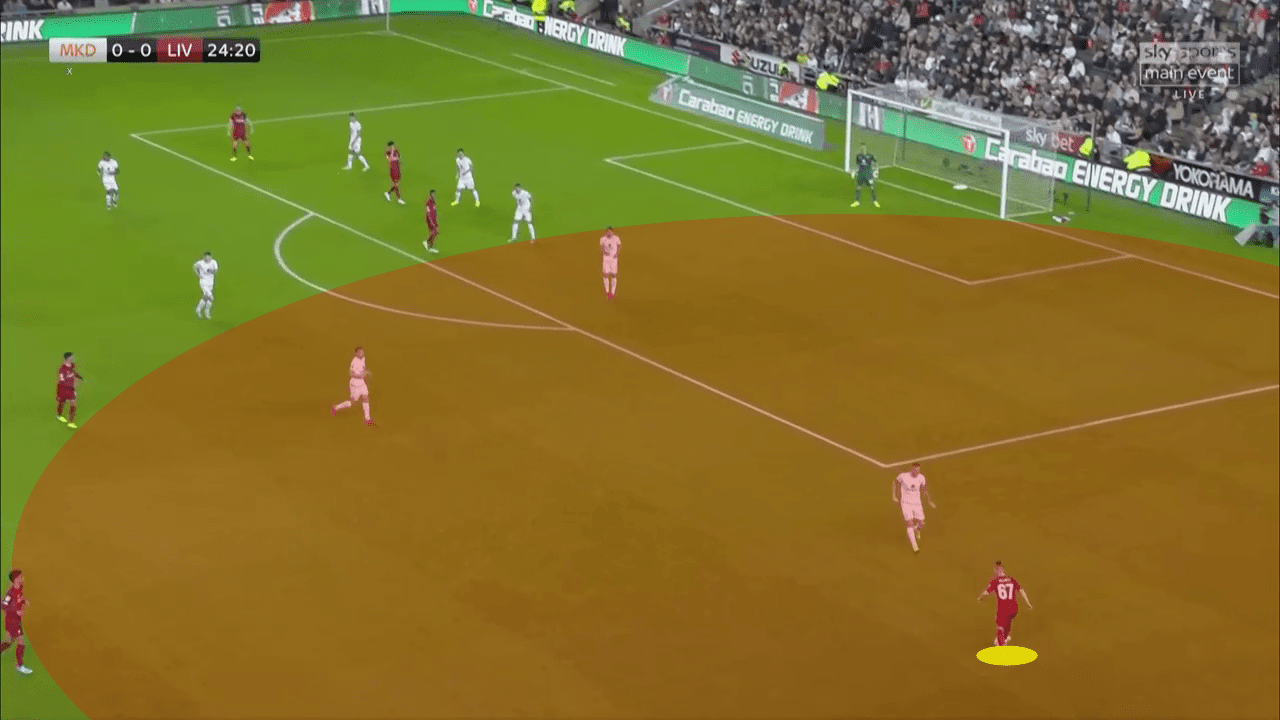
Elliott’s next challenge in adapting his game will be to better integrate into the system.
Rather than hugging the touchline quite as much, he will need to learn to be more intelligent with his movement, drifting inside or deep to create greater space and exploit defenders’ positioning.
Such movement will not only see him become more clinical in front of goal and give him more goalscoring opportunities, but it will also create less for himself.
It will also set him up well for the overlapping play that is so important to Liverpool.
Andy Robertson and Trent Alexander-Arnold’s attacking threat down the flanks plays a fundamental role, but they require the space to do so in wide areas.
Harvey Elliott Style Of Play
This has been particularly evident in the UEFA Youth League, where Elliott recorded assists in four of his six appearances in the group stages.
With a high 4.26 passes into the box per game and an xA of 0.23, it is clear that it is one of Elliott’s strengths.
His smart vision and ability to move the runs of those around him were impressive, even early on in the season when Elliott had only just joined Liverpool.
His decision-making is particularly impressive.
On his first-team debut against MK Dons, many praised him for his composure and for not rushing into a decision or making sloppy passes.
It speaks volumes that his pass completion ratio has only dropped below 80% twice this season.
He completes an impressive 64.3% of his forward passes, reflecting how he doesn’t waste possession when looking to create chances.
This example against Genk provides the ideal example as Elliott dashed inside and played a looped ball over the top for Curtis Jones to finish off.
Such inspiration is exactly what Klopp will be looking for, and Elliott’s boost of confidence would be a welcome feature inside the squad as rotations come around and he joins the team.
While he was more measured against MK Dons, it would not be surprising to see him quickly settle in and begin making such moves on the biggest stage.
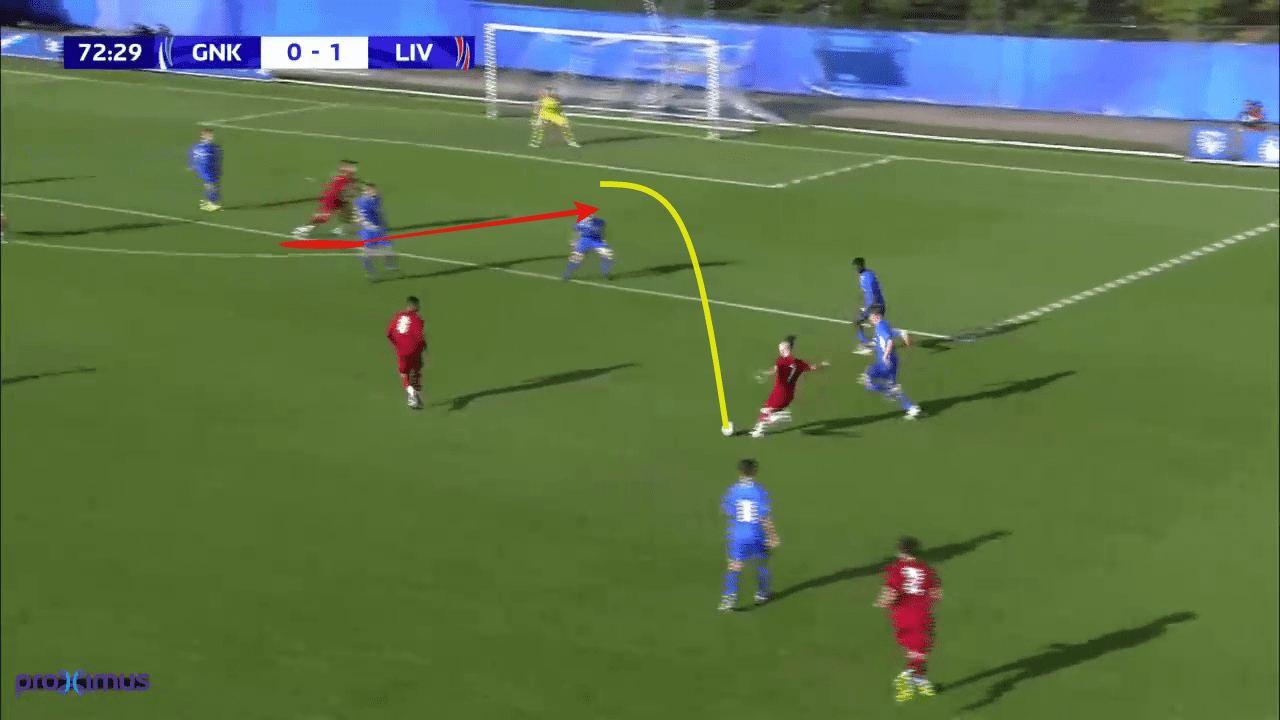
One area which must be considered here, as one of Elliott’s greatest strengths, is how he partakes in With 5.66 dribbles per game, with a 53.4% completion rate, he is more or less on par with Salah’s 5.49 (46.8% completion rate) and slightly behind Mané’s 6.76 (52.9%).
That bodes well for how he could fit into the Liverpool side, particularly given his style of cutting in from the flank and not being reluctant to take on his man and get to the byline.
What is particularly interesting about Elliott’s dribbling is how much of it takes place in the final third and in the penalty area, in particularly congested areas.
As can be shown below in his move against Napoli, he will look to exploit gaps in the defence to play a cross into the box, at times even seemingly purposefully slowing play down on the counter in order to get more of his team-mates up the field.
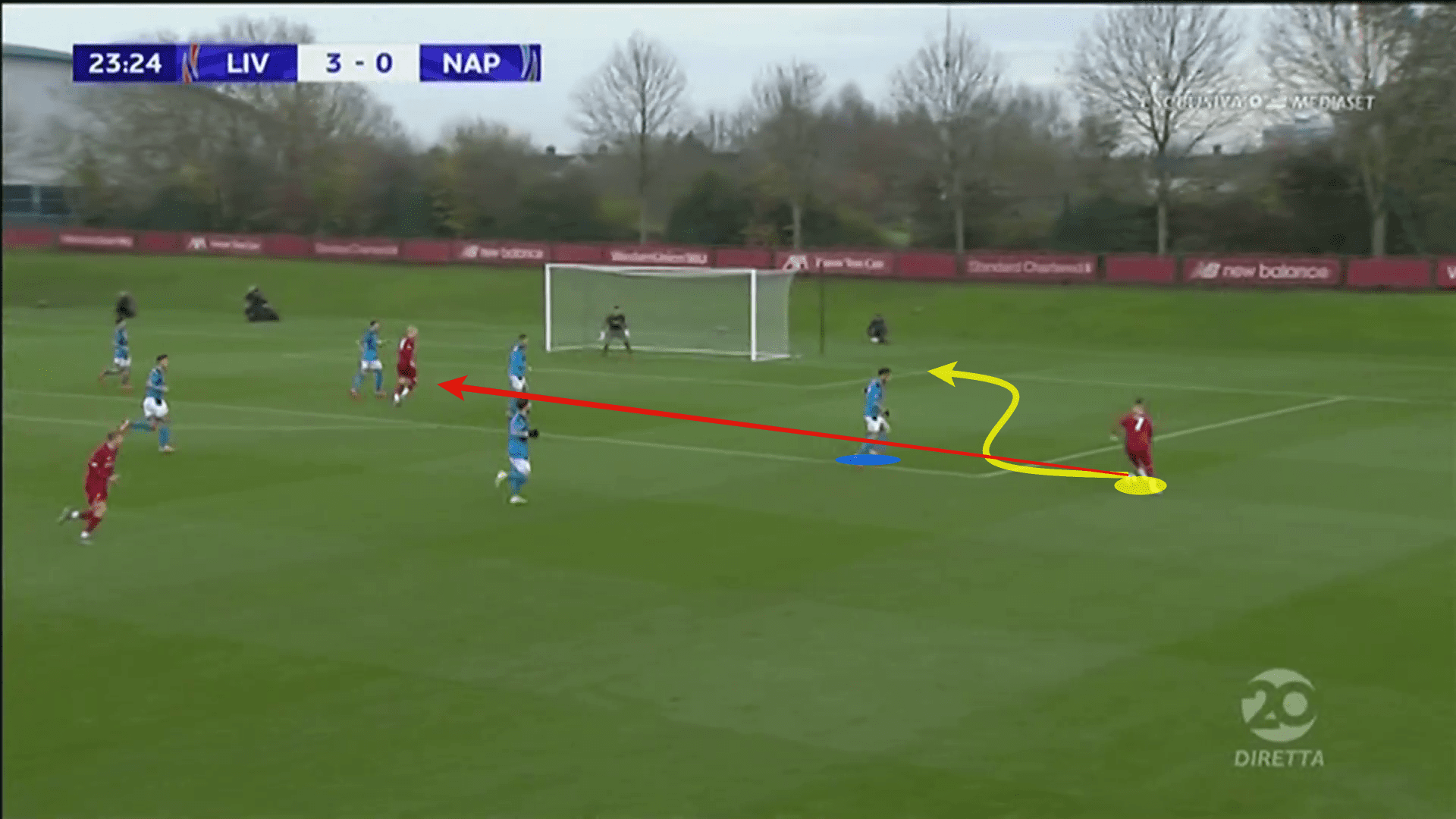
This is of interest for Klopp as it would reflect a different option to have on the bench in order to break up more stubborn and low-block defences.
Whilst they may look to shut Elliott out of the tie, he can clearly make an impact almost immediately and has no problem in taking on his markers.
As the physical side of his game develops, as will be touched upon later, maintaining this approach of cutting inside from out wide will help.
The next challenge for Elliott will be to convert these dribbles into goalscoring opportunities, as Mané and Salah do.
Rather than getting down to the byline, they will look to cut inside and get a shot away.
Whilst this is something that Elliott has been working on of late, it is not his greatest strength and he still often prefers to deploy a cross in the face of the penalty area.
Harvey Elliott In front of goal
Elliott is still yet to break his Liverpool duck in the first team and has notched only three goals from 19 appearances for the under 23s side.
It is perhaps the biggest area of improvement for Elliott as he continues to strive to make a strong enough impression to make his breakthrough.
Whilst the likes of Shaqiri step into the side and bring goals as impact players, it is a role that Elliott has not yet shown himself to be capable of playing even at a youth team level.
However, it is worth noting here that he is not vastly underscoring his xG and regularly creates chances.
His movement inside the box particularly is impressive, as was the case against MK Dons when he twice hit the woodwork after smart runs tricked opposition defenders and allowed him to pull off into space.
It was also the case against Napoli in the UEFA Youth League as he had a similar chance on the counter, those two chances across two games coming to 1.2 xG alone, but he failed to convert in either.
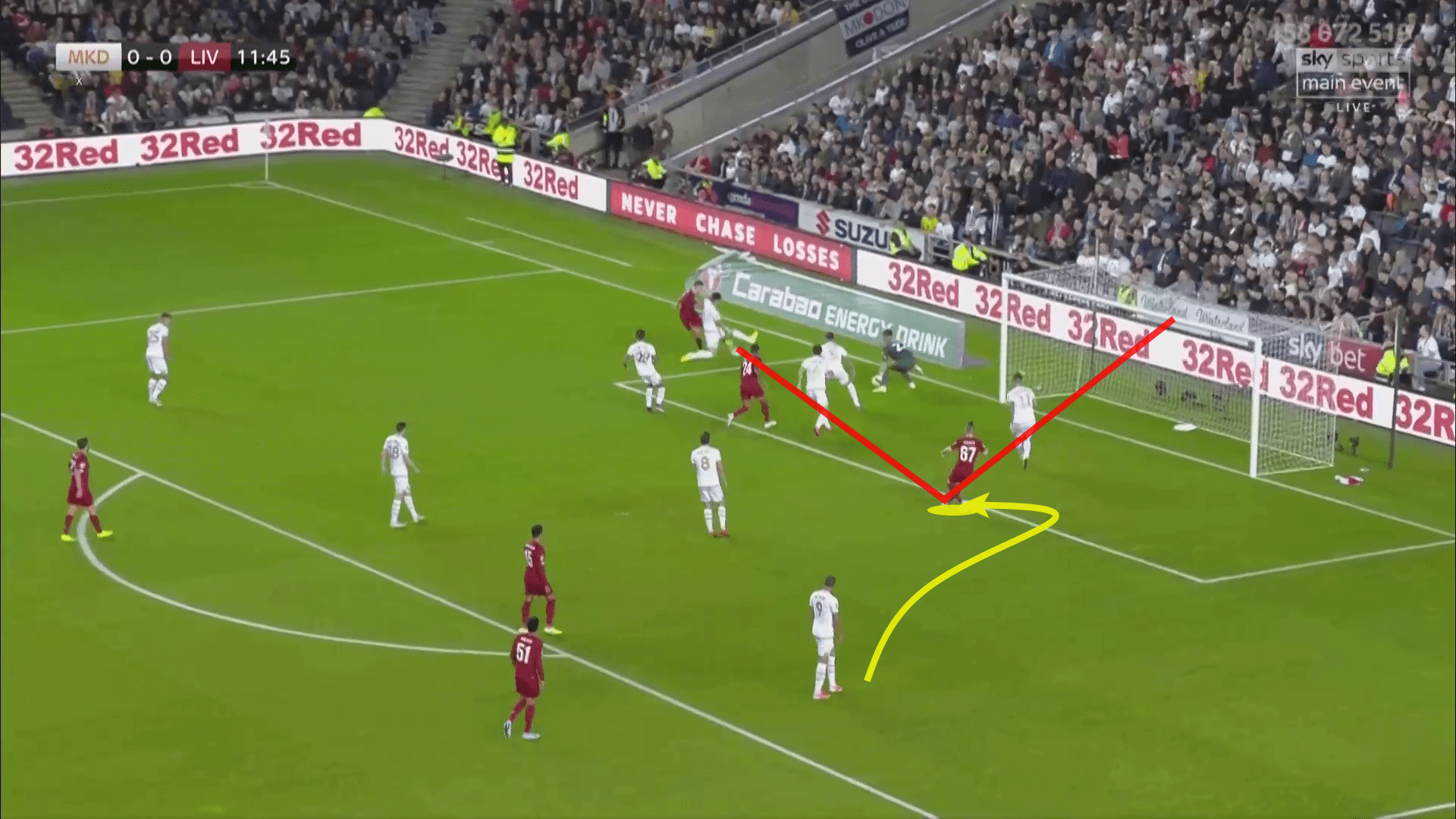
Despite those two failed conversions, they are the perfect example of how Elliott is much more of a poacher than a player who scores from distance.
In fact, in 2019/20, he registered only one shot on target from outside the box, with all of his goals coming from inside the box and many of his best chances coming within the final 12 yards.
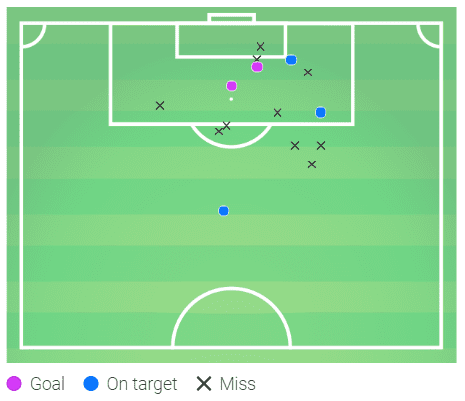
As his shot map shows, Elliott is perhaps still not a natural finisher.
He has had plenty of attempts on goal, even if many of them have been unlikely to result in a goal themselves, given their low XG.
This more prolific approach may explain why he is sometimes accused of giving up possession cheaply and why some at Fulham have shown signs of concern that he may not be the kind of team player that Klopp would usually be after.
Such criticism is harsh, though, as it is clear that he specialises in making the most of his movement to generate chances as tap-ins.
Whilst he may have lacked the composure required to convert in some recent games, he clearly needs to focus on this area if he is to make an impact at Liverpool, particularly in the first team, where many of their goals come from wide men Salah and Mané.
Harvey Elliott Defensive work-rate
One of the biggest changes in Elliott’s game has been his defensive work rate.
Clearly a key part of Klopp’s approach, Elliott has wasted no time at all in adapting his game to do so more effectively since he moved to Merseyside.
This is clear not only from watching him play, with his energetic approach in the final third, but also from his stats.
Since joining the club, he has taken his average to 4.9 possession recoveries per match, with 71% of them coming in the opposition half.
That is an incredible return, particularly when compared even to the high pressing front three of Liverpool.
Firmino completes more recoveries than any other player with 3.98 per game (63% in the opposition half), whilst Mané registers 3.86 (63%) and Salah averages 2.83 (73%).
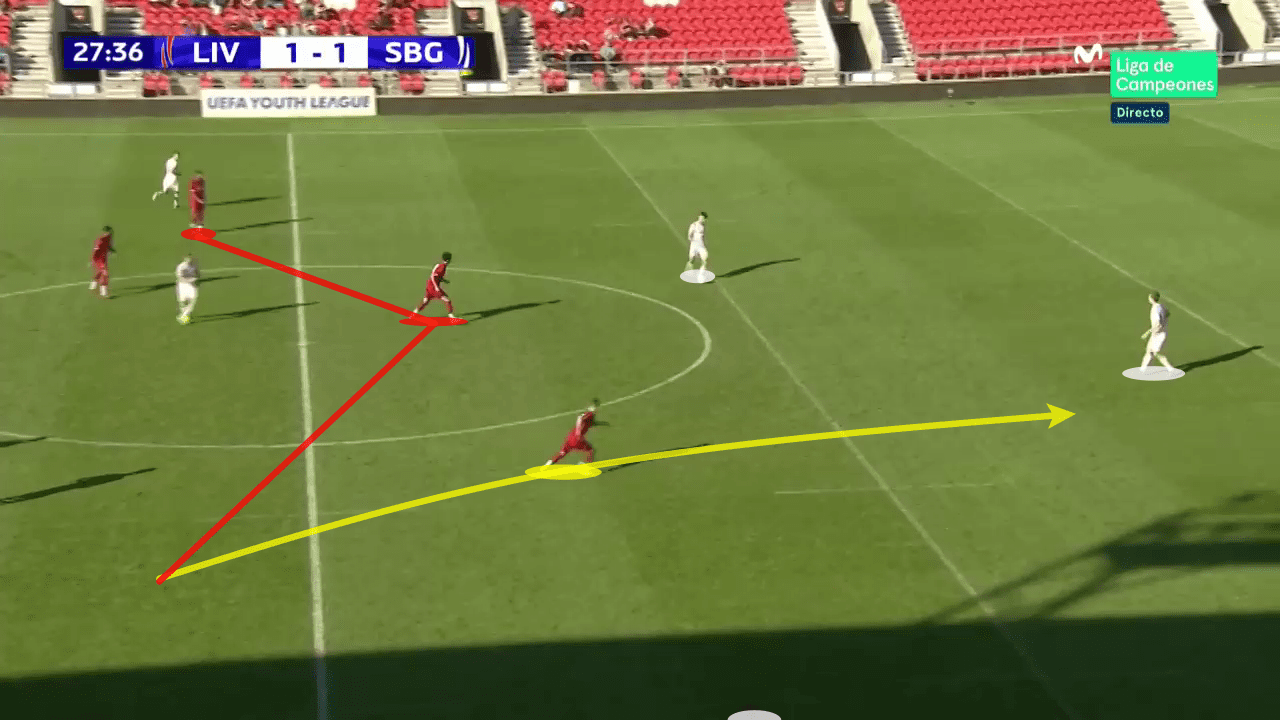
As can be seen in the above example against Red Bull Salzburg, he is often the one to lead the high press.
Whilst Liverpool’s young guns are gradually learning to deploy more of a gegenpressing approach, it is often Elliott who is the first to spark the move, looking to close down passing angles even before the man making the pass is on the ball.
This, when combined with a supporting press, can be deadly and even in this case against Salzburg, it led to a chance being created.
This is a marked change from his final season at Fulham, when he recorded just 2.9 recoveries per game.
That 69% increase in recoveries is due to his high press which has helped him to rapidly adapt to life under Klopp.
By adapting his game to the approach used by the first team, it has allowed Elliott to stand out more than his peers even in his first few months at the club.
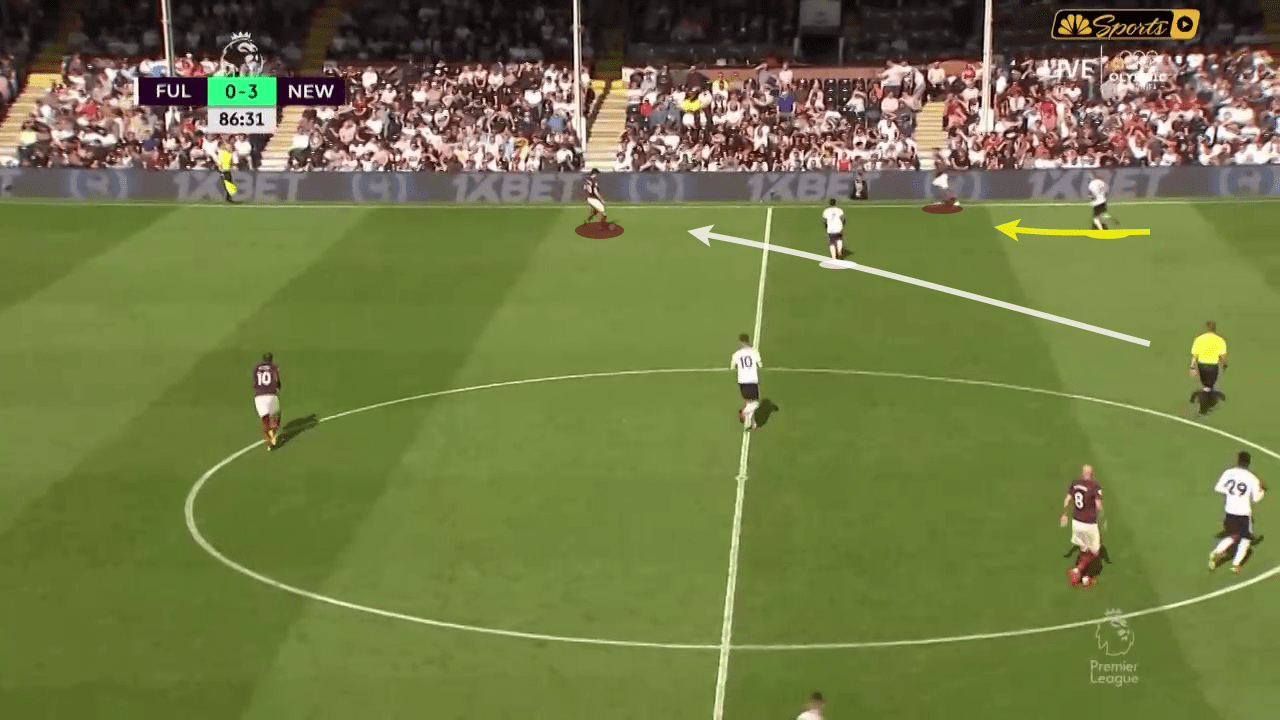
Here, in this example of Elliott at Fulham, you can see how he sat off in a deeper role, often forcing a midfielder to step up in order to make a pressing run.
Elliott would instead sit tighter to almost man mark an opposition midfielder, rather than looking to press the backline.
Whilst this may be a tactical issue, it also reflects how his game is better suited to life under Klopp than under Scott Parker last season.
What is perhaps most intriguing of all is that his defensive duels have actually decreased slightly, from 3.38 per match last season to 3.09 this season.
This would suggest that Elliott is being more selective in his pressing, engaging only when there are real opportunities to turnover possession.
It also reflects the more advanced role which he has taken up at Anfield, as opposed to the role he played at Craven Cottage.
Harvey Elliott Physicality
It is perhaps important to note that Elliott is still only 16 years old.
At five feet, seven inches tall and weighing just 10 and a half stone, you can tell.
Unlike many other examples of players to break through at such an age, he does not have pace to burn or any other physical advantages.
Whilst that may seem like a criticism, it is far from it.
Elliott’s gradual maturing will help him to have more and more of a presence.
He is already showing great signs of mental maturity and talent and will now only be waiting for the physical side to catch up as he makes the most of the superb facilities available at Liverpool.
This combination, of greater mental and talent skills, rather than a single physical aspect, is far more promising for the long-term future of his development.
Looking at previous youngsters to come through the Liverpool ranks, Steven Gerrard had a similar development.
When he broke onto the scene as a teenager, he initially lacked the strength and physical presence of his team-mates.
With time and greater discipline, he became a world-class player who maintained his level for years to come.
On the other hand, Michael Owen immediately became a star thanks to his lightning pace, but it quickly faded and he struggled to keep up the same level of quality.
Elliott’s potential coming to fruition may well be determined by how quickly his physical presence catches up with his technical abilities.
Whilst he has impressed in his Liverpool performances to date and for the under 23s, he must build up his presence to avoid being bullied out of the game when playing at an elite level.
What lies ahead in 2020?
More first-team chances seem inevitable for Elliott.
He has already featured in Liverpool’s Carabao Cup games against MK Dons and Arsenal and made the bench for the UEFA Super Cup final.
Klopp is clearly an admirer and the wide forward position is one where Liverpool are lacking in strength in depth.
Patience must be maintained though, particularly given Klopp’s approach of bringing other youngsters into the fray.
The likes of Ki-Jan Hoever have also had a taste of first-team life without becoming a regular presence and Elliott will likely fall into that category again.
At 16 years of age, he still has plenty of time to continue his development, adapt physically and tactically and become more of a natural fit for this Liverpool side and their system.
Already he is showing that his work-rate and press has adjusted to the demands of Klopp.
With that in mind, the future looks promising that he can continue to develop.

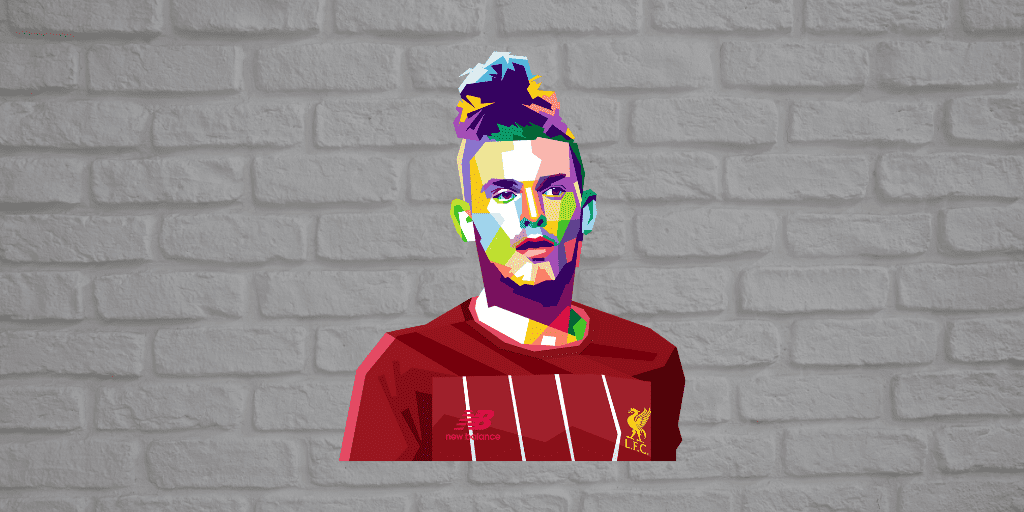



Comments